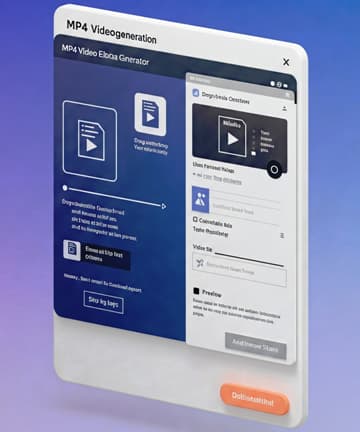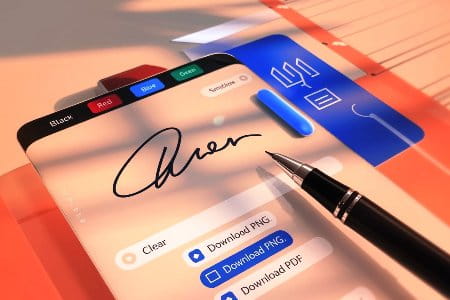PNG to JPG Converter
Edit Your Photos the Professional Way
To improve your blog images, you have to convert the PNG images to JPG.
The file size is too big. Perhaps your theme does not display PNG thumbs well.
Either way, you are stuck.
This free converter of PNG to JPG does just that, putting an end to the frustrations of the format mismatch, all within seconds. Not sophisticated software. Simply upload, adjust, and download.
Let me show you the manner in which it works and behaves.
Why I Came Up With This Tool
I have blogged for years.
I go crazy about just one thing: the format of the pictures.
PNGs are wonderful. They are big, though. An individual PNG will make your whole page slow.
JPG files are smaller. They load faster. Google likes that.
But moving between formats meant opening up Photoshop. Or shelling out for some subscription software.
No longer.
Instructions How to Use This Converter
The tool is positioned perfectly within your blog post, seamlessly integrated to enhance the overall content.
The procedure you must follow is detailed as follows:
- Click the upload area. Choose your PNG file. You'll be able to drop and upload it too.
- The image appears immediately.
- You'll see the file size. Dimensions. Everything you'll ever want to know.
- And finally, the key point: quality control.
- See that slider? Slide it left or right. Low numbers mean smaller files. High numbers mean better quality.
- I always make sure my battery percentage remains 90 percent all the time. That percentage actually represents the ideal percentage for optimal performance.
- Hit the convert button. Wait two seconds. Done.
- You can now proceed to download your new JPG file.
- Your browser saves it. Use it wherever you need.
Quality Slider Detailed Descriptions
Quality Slider was developed by Sand
Most individuals are likely to be incorrect on this particular area.
They elevate the quality to an impressive level of 100 percent. As a result, the final file size becomes nearly as large as that of the original PNG format.
They may even reduce it to just 50 percent. Then the image ends up looking of very poor quality and doesn't appear well.
Here's my system:
- When you are scanning photographs containing a lot of minute details, the quality level should be between 85 and 95 percent.
- For simple screenshots or graphic imagery, 75 to 85 percent is best.
- For thumbnails, displayed small anyhow, 70 to 80 percent does the job.
- Experiment on your own. Take the time to download using different settings. Experiment and find the configuration you are most comfortable with.
- Your eyes are the finest and most reliable judge of all.
- Physical Advantages That You Will Enjoy
- First and highest priority is making the page load sooner.
- LARGER images take longer to load. Your readers wait. Google promotes fast sites and demotes slow sites.
I conducted an experiment on my personal blog to see how changing the image format would affect performance. When I switched from using PNG images to JPG format, I observed a significant reduction in load time by an impressive 40 percent.
That's massive.
- Storage space matters as well.
- If you are on shared hosting, each megabyte matters. JPG photos are far more compact.
- You can upload more images. Store more content. Without hitting limits.
- And something people always forget: smartphone owners.
- It turns out half of readers are accessing your blog using their cell phones. These readers are frequently remote and connected to slow internet. Therefore, big PNG files are capable of drastically worsening the user experience.
- JPGs are quicker downloads. Even on poor networks.
- When to Opt to Maintain the PNG File
- Don't mindlessly translate all.
PNG does play a part.
Is your photo transparent? If so, then you should keep it asPNG. You cannot have transparent backing with JPG.
Images having transparent backgrounds should be inserted through the PNG file format.
Graphics containing clear text or defined lines have a habit of looking better visually when they are stored in the PNG format too.
JPG can make text look fuzzy. PNG keeps it crisp.
Utilize this instrument for pictures. Actual pictures. Screenshots without the display of transparency.
Those are the ones benefiting by converting to JPG.
How It Really Works and Functions in the World
The software employs HTML5 canvas technology.
When you upload a PNG, your browser processes it. No server. Everything occurs on the local machine.
First, the painting creates a clean white backdrop. This step is particularly crucial.
PNG transparency translates to white in JPG. You would have some wonky black spots without the white background.
Then, it takes your image and overlays it on top of the existing content.
Compression is controlled by the quality slider. Lower quality = higher compression. Smaller file size.
- Higher quality = lower compression. Larger file but better image.
- The browser converts everything to JPG format. Creates a download link.
- You click it. File saves.
- Simple and direct procedure. Prompt and speedy results.
- Why This Trumps Other Available Tools
- Most convertors have you wait.
- Upload to their server. Wait for processing. Download back.
- That process is actually time consuming. Furthermore, your picture goes through the system of another person.
- This particular utility works seamlessly within the limitations of your web browser.
- Nothing goes on your computer. Your photos remain private.
- No size limitations on files either.
- Those internet-based convertors are only able to convert 5MB or 10MB. That's whatever your browser would be able to open.
- And it's designed just for bloggers.
The quality presets function just fine for photo enhancement and blogging. The user interface has been cleverly designed, so you are not hit by irrelevant options you don't care about.
It does a single job perfectly.
My Recommendations Based on My Personal Experience
I convert the images prior to posting on WordPress.
Not after. Before.
This way, the quality is under my control. I myself get to see what I'm getting.
Auto-compression on WordPress does not always function. It may work well sometimes. Other times, it ruins pictures.
- Try it on yourself first.
- Name your files properly too.
- Use descriptive names. "beach-sunset-miami.jpg" beats "IMG_4729.jpg" every time.
- Google scans file names. File names are beneficial for SEO.
- And always save your original PNG files.
- Store them in some safe place. External hard drive. Cloud backup.
- You may need them later. For print. For high-resolution displays. For edits down the road.
- Make photocopies. Do not leave originals.
- Some Mistakes That Should be Avoided
- Don't repeat the same picture twice.
- And you lose quality if you begin as a JPG, and you switch to PNG and back to JPG.
- Every conversion of format loses information. It is the equivalent of creating the second generation of photocopies.
- Begin with the most reputable and highest level of quality source you have access to.
- And watch your proportions.
This program does not resize original sizes. However, if your PNG happens to be 5000 pixels wide, your JPG would be the same.
Resize first if necessary. Then convert.
Large sizes equate to large files. Even the JPG version.
And do not forget the quality check.
Download your converted image. Open it. Look at it full size.
Make sure everything looks attractive and refined well before you go ahead and publish it.
Better to correct mistakes early than once people have complained.
It Offers Help Mainly to Those Who Need It the Most
Bloggers certainly.
Any frequent content publisher. You need rapid, convenient conversion.
- Web designers also receive advantages.
- The client has sent you a PNG image file. However, what you actually require for the website is a JPG format. To accomplish this task, you can conveniently convert the PNG to JPG directly within your web browser.
- It even applies to the managers of social media.
- Various sites require different formats. Convert on the fly.
- Students writing papers with photos.
- The owners of small businesses are currently renovating and modernizing their premises.
- People who embark on assignments relating to photographs, but not having the degree or expertise of a seasoned photographer.
- You don't need Photoshop. You need results.
Technical Aspect
After identifying the
For those most intrigued by the facts and finer details of a situation:
It uses JavaScript FileReader API. That reads the file you upload.
Canvas API performs the actual transformation. It provides a 2D drawing context.
It creates the white backdrop through the fillRect function. It paints the image onto the canvas through the drawImage function.
Conversion to Blob happens by the toBlob method. That's where quality setting comes into the picture.
It uses URL.createObjectURL for downloading. It creates a temporary URL for the blob.
They are all compatible with current browsers.
Chrome, Firefox, Safari, Edge. Even smartphone browsers are okay.
No plugin required. No extension. Straight browser functionality.
Conclusion Reflections
Optimisation of the image does.
Your blog loads sooner. Your readers linger longer. Google favors you.
This tool makes it easy.
Drop in your PNG. Get out a smaller JPG. Keep quality high.
No learning curve. No subscription. No upload limits.
Experiment with quality options. Discover the best suited for the given content you are targeting.
Be sure to bookmark the tool so you can access it easily. Use it every time you upload your writing.
Your future self would be so pleased, you'll be able to see your website loads almost instantly, just under two seconds.




